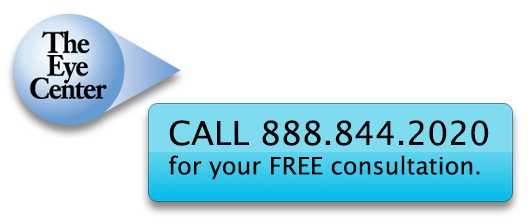No Printable Version (PDF)
PRK stands for photorefractive keratectomy. It is a minimally invasive laser surgery procedure used to correct refractive errors of the cornea. The procedure causes little discomfort and can be performed as an outpatient procedure. The entire procedure takes less than 30 minutes to perform.
PRK Procedure
Prior to surgery, drops are inserted into the patient’s eye to numb it. The patient will lie down on a table or reclining chair with a secure headrest to hold the head still. The eye to be operated on will be fitted with a speculum that will keep the eyelid open. A light will be targeted toward the eye and the patient will be asked to fixate or stare at the light. This is so the laser can be directed in a precise manner to reshape the cornea. The doctor will sculpt out a 6 to 9 mm section of the epithelium (the top layer or surface of the eye) using an excimer laser. The laser treatment usually lasts less than a minute. Drops will be instilled in the eye to help with healing and to prevent infection. A clear shield may be placed on the eye as well.
Risks
Any time surgery is performed with anesthesia there is a risk of allergic reaction and complication from the drug used. Other possible risks or side effects are as follows:
- A loss of perfect clarity of the cornea, usually not affecting vision, which often resolves over time (anterior stromal reticular haze).
- A sensation produced by bright lights that is greater than normal and can cause discomfort and annoyance (glare).
- A halo or hazy rings surrounding bright lights may be seen particularly at night (halo).
- An inability to correct your vision with glasses or contact lenses to the level it was before this procedure (loss of best corrected acuity).
- An increase in the intraocular pressure (IOP) due to post-treatment medications, which is usually resolved by drug therapy or discontinuation of post-treatment medications (IOP elevation).
- Overcorrection or undercorrection of vision.
Refractive surgery may not give you the result you desired. In some cases retreatment, glasses, or contact lenses could be effective in correcting vision.
Surgery will not eliminate the need for reading glasses and for some people may require their use at an earlier age.
Recovery
The surgeon will send you home with antibiotic drops to be instilled directly into the eye several times a day to prevent infection. Corticosteroid drops or anti-inflammatory medication may be prescribed to alleviate swelling. Strenuous physical activity should be limited until the ophthalmologist has determined the eye or eyes have healed properly.
Vision improvement should be noticeable within a few days after surgery and complete recovery will take up to 6 weeks. Vision improvements will be gradual and should reach the final state within 6 months.
This educational material is provided by Dialog Medical.
© Copyright 2005 Dialog Medical
All Rights Reserved
The Eye Center
Call Toll Free 1.888.844.2020

